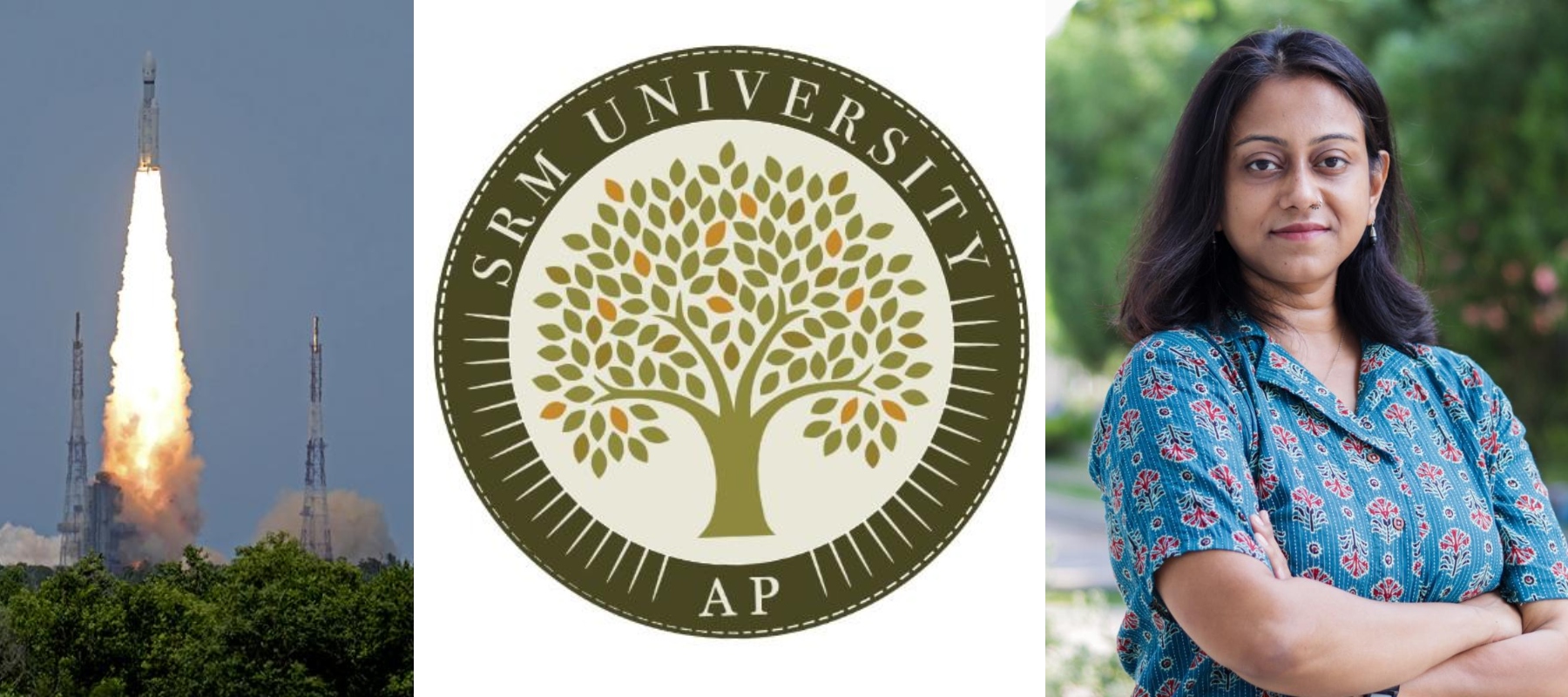10..9..8..7..6..5..4..3..2..1..0 and it’s a lift-off for ISRO’s (Indian Space Research Organisation) Chandrayaan -3 at 2.35 PM on July 14, 2023, from the Satish Dhawan Space Centre in Sriharikota, Andhra Pradesh, India. It was not a take-off for only Chandrayaan-3, but also the aspiration and aim of billions of Indian citizens. Chandrayaan-3 is a follow-up mission to Chandrayaan-2, which was launched in the year 2019. However, due to the flaws in the retardation process which actually reduces the landing velocity of the Lander Module, Chandrayaan-2 encountered a crash landing (landing with higher velocity). This incident has raised serious concerns and challenges for ISRO about how the problem of crash landings can be resolved. In this context, the chairman of ISRO, S. Somnath, made an interesting comment that the design of Chandrayaan-3 is founded rather on failure-based learning, not on the successes of predecessors. The purposes of this mission are three-fold, such as the smooth and soft landing of the spacecraft on the Lunar Surface, studying the behaviour of the rover while it is roving on the surface and conducting scientific experiments to study the moon’s environment.
The vital components of this mission, such as the Launch Vehicle Mark-III (LVM-3), Chandrayaan- 3, the spacecraft, the lander, the rover, etc. are designed and developed by ISRO. The LVM-3 is a heavy lift launch vehicle, carrying three modules – the propulsion unit, the lander module and the rover. In order to avoid a crash landing, this time ISRO has incorporated many important features, such as the inclusion of stronger legs for the lander, an efficient process of retardation, expansion of the area of landing, use of more fuel than the earlier project, etc. If Chandrayaan-3 can touch down the Lunar Surface softly, India will acquire the fourth position in the world to have accomplished it after the United States, Russia and China.
Saga of leadership: India’s consistent achievements in the field of space research indeed, have a beginning which was commenced under the leadership of Dr Vikram Sarabhai, known as the father of the Indian space programme. ISRO was a brainchild of Dr Sarabhai and was established in 1962 by the Government of India. Starting with the Aryabhatta satellite (1975), Kalpana-1 (2002), Chandrayaan-1 (2008), Mars orbiter mission spacecraft (2013), Launching of 104 satellites with a single rocket (2017), Chadrayaan-2 (2019), GSAT-30 (2020) and as far as Chandrayaan-3, ISRO has continued to achieve and conserve its vision. These numerous achievements signify that the leadership of Dr Sarabhai which has led India to step into the international platform of space research is persisting with its full potential and leading our country to play one of the central characters in the stage of global space research. It can be perceived that in the mission Chandrayaan-3, a collective effort has been made by several experts who belong to diverse fields of expertise. Simultaneously, it can also be realised that to organise such a large-scale mission in terms of both academia and the administration, a proper group of leaders is indispensable. Some notable personalities who took this responsibility on their shoulders are as follows: S. Somnath (chairman of ISRO), P Veeramuthuvel (the project director of Chandrayaan-3), S Unnikrishnan Nair (the director of Vikram Sarabhai Space Centre), A Rajarajan (chairman of Launch Authorisation Board (LAB)) and M Sankaran (Director, U R Rao Satellite Centre (URSC)).
It’s worth mentioning that this mission is not at all a male-led mission. Around 54 female scientists and engineers are involved in this mission with their expertise and they belong to the designations
such as “associate and deputy project directors and project managers of various systems”, as reported in the Times of India.
Collaborators: Apart from the convergence of academic expertise, one can notice another kind of synergy in the mission Chandrayaan-3, a collaborative effort of ISRO with several industries and institutions. To cite, the active participation from industrial organisations such as, the Larsen and Toubro (L&T) can be perceived. This company has played a significant role in manufacturing and launching the vehicle LVM-3 in appropriate places. For over five decades, L & T has been a consistent partner of the country’s space programme. Similarly, Godrej Aerospace, a Mumbai-based company has advanced and fabricated the liquid propulsion engines, the cryogenic rocket engine (CE20) and the satellite thrusters. This company has been a potential supplier for ISRO for quite a long time and also contributed to the earlier Chandrayaan and Mangalyaan missions. Another company named Himson Industrial Ceramic has provided a fireproof ceramic component which is capable of protecting the wiring system and constituents of the spacecraft from extreme temperatures.
Another noteworthy contribution in Chandrayaan-3 has been made by the CTTC (Central Tool Room and Training Centre), Bhubaneswar, comes under the Ministry of Micro, Small and Medium Enterprises, Government of India. The committed endeavour and effectiveness of the technicians at CTTC, Bhubaneswar has led this institution to be one of the collaborators of ISRO. They have constructed flow control valves, sensors and regulators for the launch vehicle LVM-3 and built up some important ingredients which are implanted in the modified version of the wheel mechanism of the Lander so that a soft landing is possible.
International recognitions: On the launching of Chandrayaan-3, ISRO received thousands of compliments and applause from other countries and international space research organisations. NASA director Bill Nelson has commented that “India is demonstrating its leadership on Artemis and Accords”. The European Space Agency congratulated ISRO and mentioned their contribution to this mission. A tweet from the US embassy congratulated India on this mission and commented – “Exciting times for international space exploration as we continue collaboration (Us-India Space Collaboration )”. It is well established that the entire world is eagerly awaiting the outcomes of the Chandrayaan-3 mission.
At this stage, let us pause for a while and acknowledge the collective efforts of several foundations of our country, such as academia, industries and developing institutions, which stepped forward and took the initiatives in the mission Chandrayaan-3.
Possible initiatives: Well, the path is shown by our respected predecessors. Their tireless effort has made us one of the leading nations in space research and now it’s our turn to carry forward the legacy of India’s space research. It is a favourable time when we should think collectively about how to innovate further so that the existing path can be wider, the horizon of the technical limitations can be stretched out, what are the upcoming challenges and how can we bring our country to the top among all? These questions are simple and so, as the answer – as Carl Sagan said, “ The cosmos is within us. We are made of star-stuff. We are a way for the Universe to know itself ”. Undoubtedly, the young minds of our country, students of different levels, are the potential candidates who may come forward to inherit the responsibilities and deliver their best. However, another question may arise in this regard – how to guide our young minds towards such unprecedented ventures? Students at different levels (undergraduate – doctoral) should be provided with enough motivation so that they build up a strong desire to step into space research and try to associate themselves with the revealed/ unrevealed aspects of nature. To start with, a strong motivation may even come up with the visualization and theoretical demonstration of the night sky, informing them about the length scales of
the planetary systems, galaxies, Universe, cosmos etc., making them aware of the achievements of humans in knowing the Universe with respect to both astrophysical and cosmological studies, building up their taste for watching good science movies, visiting the Laboratories having facilities for Astrophysical observations etc. In educational institutions, mentors need to communicate with the students about space research and training programmes, internship programmes and workshops which are organised locally or globally as well. For example, some of the centres of ISRO, like the Indian Institute of Remote Sensing, Dehradun, Centre for Space Science and Technology Education in Asia and the Pacific, ISRO STEM, Space Application Centre, Ahmedabad, organize and conduct several training programmes for undergraduate to doctoral students. Furthermore, some autonomous units of DOS (Department of Space, Government of India), such as the National Atmospheric Research Laboratory, Andhra Pradesh, Physical Research Laboratory, Ahmedabad and the Indian Institute of Space Technology, Kerala also take part in organising several internships and training programs for students belonging to undergraduate – doctoral level.
On a special note, Dr Gangi Reddy Salla, an Assistant Professor in the Department of Physics, SRM, Andhra Pradesh, has an active collaboration with the National Atmospheric Research Laboratory, Andhra Pradesh, in order to carry out an ongoing project.
It is noteworthy that with our revamped curriculum at SRM, Andhra Pradesh, our students will be furnished with a balanced understanding of the theoretical foundation and observational prominence of the subject matter (for the present context – Astrophysics, Communications, AI Coding, Instrumentation and Space Research) so that they can identify the unresolved issues from both the theoretical and observational perspectives and define their research problems accordingly. Our initiative will prepare the students with an in-depth ground/base so that they will become more confident in enrolling themselves into the challenging training programs. This in turn will give an additional thrust to their thought process, skill learning, raising questions, discussing results, communicating with the experts and largely initiating their own startups and collaboration. Yes, by all means, we want to see our young minds walking in that direction.
Contributed by Dr Ashmita Das, Astt. Professor -Department of Physics, SRM University- Andhra Pradesh
Views expressed are personal.
Keep watching our YouTube Channel ‘DNP INDIA’. Also, please subscribe and follow us on FACEBOOK, INSTAGRAM, and TWITTER











